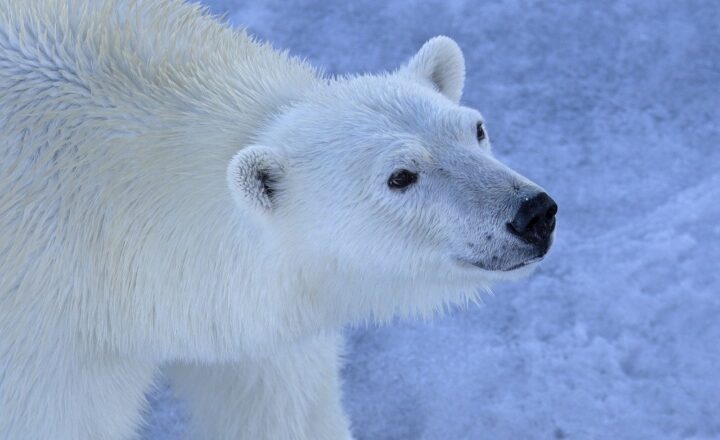What Earth’s History of Climate Change Tells Us About Future Weather Patterns
November 12, 2024

Understanding Earth’s climate history is crucial for navigating future weather patterns and recognizing potential risks associated with climate change. From the warming temperatures of the past to the catastrophic events that shaped our planet, the lessons learned from Earth’s climate history can offer valuable insights into what we can expect in the future.
1. A Brief Overview of Earth’s Climate History
Earth’s climate has undergone significant changes over millions of years, fluctuating between warm and cold periods. The key eras include:
– The Hadean Eon: No stable climate, strong volcanic activity, and an atmosphere mainly composed of hydrogen and helium.
– The Archean Eon (4 to 2.5 billion years ago): The Earth cooled considerably, allowing for the formation of stable land masses. Life began to emerge in the form of simple organisms.
– The Proterozoic Eon (2.5 billion to 541 million years ago): Marked by the appearance of atmospheric oxygen and the first multicellular life. Around 600 million years ago, significant glaciation occurred, indicating severe climate shifts.
– The Paleozoic Era (541 to 252 million years ago): This era was marked by diverse marine life, and 250 million years ago, the Permian period ended with the largest mass extinction event, likely due to climate changes and volcanic activity.
– The Mesozoic Era (252 to 66 million years ago): Known as the age of dinosaurs, this period experienced fluctuating climates, including the initial warming during the Triassic period.
– The Cenozoic Era (66 million years ago to present): Witnessed the rise of mammals and birds, and the transition from the last Ice Age to our current interglacial period.
These major climate shifts demonstrate that Earth’s climate is inherently variable, influenced by natural events such as volcanic eruptions, solar radiation changes, and tectonic shifts.
2. The Ice Ages: A Lesson in Natural Climate Variability
One of the most telling chapters in Earth’s climate history is the Ice Ages. The last Glacial Maximum occurred around 20,000 years ago, when ice sheets covered vast portions of the Northern Hemisphere. During the Holocene, which began approximately 11,700 years ago, the planet gradually warmed, leading to the emergence of human civilizations.
The cyclical nature of Ice Ages, driven by Milankovitch cycles (changes in Earth’s orbit and tilt), provides insight into natural climate variability. These cycles can alter the distribution of solar energy received by Earth, causing periods of warming and cooling. Understanding these mechanisms highlights the importance of recognizing that climate change is part of Earth’s inherent cycle.
The lessons learned from these dramatic shifts in climate, particularly the rapid warming following the last Ice Age, encourage us to examine human impact on current climate trends more critically.
3. The Industrial Revolution and Accelerated Climate Change
The Industrial Revolution marked a pivotal point in Earth’s climate history. Beginning in the late 18th century, the widespread use of fossil fuels led to a dramatic increase in greenhouse gas emissions. This era initiated a trend of global warming that has escalated in recent years.
Data from ice cores show a stark rise in carbon dioxide and methane levels since the mid-19th century. As a result, global temperatures have increased by approximately 1.2 degrees Celsius since the late 1800s. The rate of change is unprecedented in the context of Earth’s climate history.
Key consequences of this accelerated climate change include:
– Rising sea levels due to polar ice melt.
– Increased frequency of extreme weather events, such as hurricanes, floods, and droughts.
– Disruption of ecosystems and biodiversity loss, as species struggle to adapt to their rapidly changing environments.
Understanding this correlation between industrialization and climate change reinforces the pressing need for immediate action to mitigate such impacts.
4. Predicting Future Weather Patterns: What Can We Learn?
By analyzing past climate trends, scientists utilize climate models to predict future weather patterns and their implications. Here’s what we can glean from historical data:
– Increased Temperature Extremes: Historical records indicate that while the Earth naturally experiences warm and cool periods, human-induced climate change has led to unprecedented temperatures. We can expect more extreme heat days, particularly in urban areas where heat islands are forming.
– Changes in Precipitation Patterns: Data suggest that some regions may experience increased rainfall, while others could face severe droughts. Historical fluctuations indicate that these patterns may intensify, leading to ecosystem stress and agricultural challenges.
– Rising Sea Levels: Sea levels have been steadily rising, with historical records showing heightened rates in recent years. Coastal areas must prepare for flooding, erosion, and habitat loss due to this persistent threat.
– Frequency of Natural Disasters: As seen from past geological records, significant climatic disruptions can lead to natural disasters. Increased hurricane intensity, heatwaves, and wildfires may become the norm if current trends continue.
Utilizing models based on Earth’s geological history provides not only warnings but also opportunities for adaptation strategies in vulnerable regions.
5. Adapting to Climate Change: Learning from the Past
The history of climate change is filled with lessons that can inform our actions today. How can we adapt based on what we’ve learned?
– Invest in Renewable Energy: Transitioning to renewable energy sources reduces dependence on fossil fuels and can minimize greenhouse gas emissions.
– Implement Sustainable Agricultural Practices: Historical agricultural methods can inform modern sustainable practices, preserving natural resources while ensuring food security.
– Enhance Resilience in Infrastructure: Learning from past climate-related disasters, we can build more resilient urban and rural infrastructure that can withstand future climate impacts.
– Promote Biodiversity Conservation: Protecting ecosystems is crucial for maintaining biodiversity, which provides natural resilience against climate change. Many species may offer insights into adaptive capacities.
Adapting effectively now can significantly influence future weather patterns for generations to come.
6. Conclusion: The Urgency of Now
History has taught us that climate change is not a new phenomenon; it is a powerful force that has shaped our planet for eons. The interplay between natural events and human activity has accelerated change at an alarming rate.
As stewards of our planet, recognizing the urgency of the situation is crucial. By understanding the lessons from Earth’s climate history, societies can take proactive steps in mitigation, adaptation, and innovation to ensure a sustainable future.
Knowledge gleaned from the past is not just informational; it is a call to action, emphasizing that the time to address climate change is now. Through informed decision-making, we can strive to create a resilient world capable of withstanding the challenges climate change presents while ensuring the safety and prosperity of future generations.







